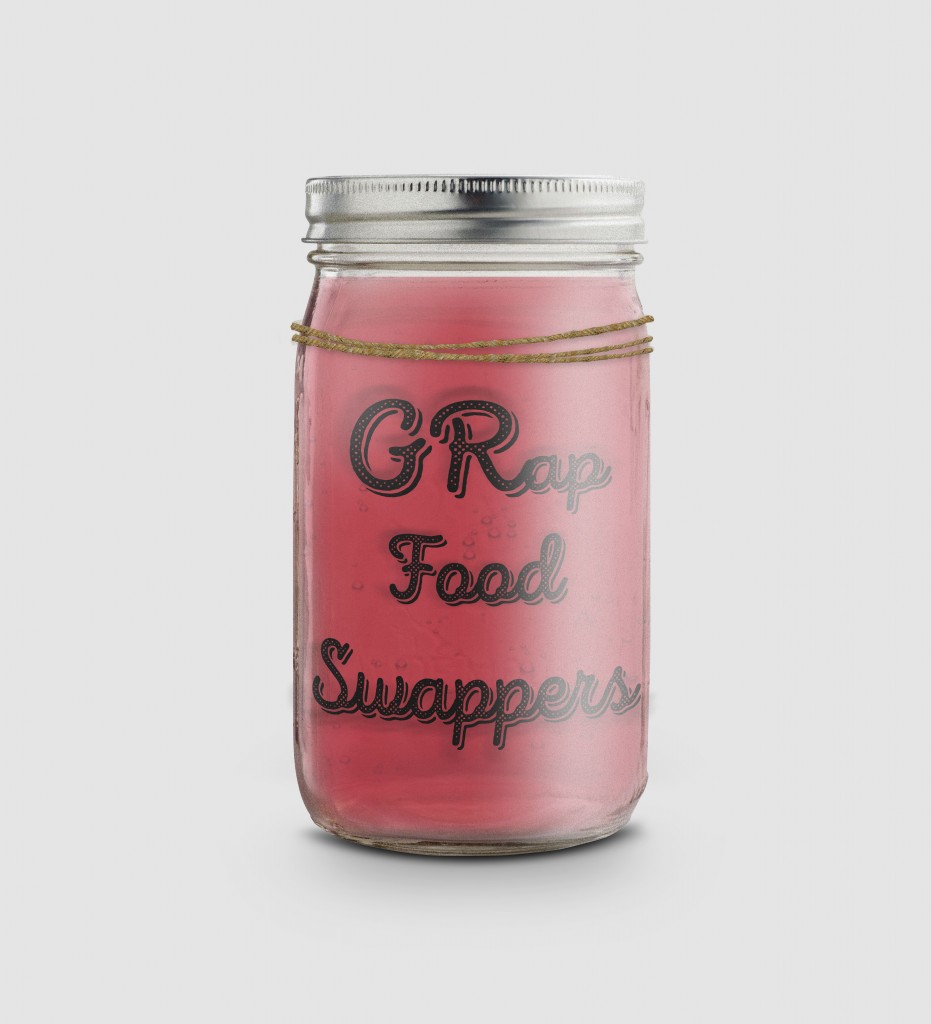GRap Food Swappers is an organization dedicated to bringing together cooks, bakers, canners, gardeners and foragers to trade homemade and homegrown foods. Along the way, we hope to forge new friendships and trade inspiration.
Click here to download swap sheets
A food swap is a simple event that allows people to trade homemade, homegrown, or foraged foods.
What a food swap looks like
Arrival
You arrive at the designated location. When you enter, you see tables lining the room and people are already setting out beautiful jars of jams and pickles, bags of baked goods, and produce. A swap host greets you and asks you to find space on a table for your items. She also asks you to fill out a “swap sheet” (also known as a “bid sheet”) for each kind of item you bring. Since you brought six jars of your famous spicy marsala sauce and six tubs of apricot yogurt, you fill out two swap sheets. The form asks you to identify if there are any common allergens in any of your foods, which you appreciate because you’re rockin’ a gluten-free diet these days and you want to stay safe.
Sampling, mingling, and bidding
You put little samples of your items out in front of your jars and tubs (or on the snack table) so people can try out your awesome sauce and yogurt. After everyone has displayed his or her items nicely on the tables, some with samples, some without, one of the swap hosts welcomes the group, celebrates all of the new swappers, and explains how the swap is going to work. Once questions have been answered, he tells everyone to begin walking around the room, checking out what everyone has brought to the swap and to begin making bids. Each swap sheet works like a silent auction bid sheet, except you are not bound to or required to swap for items on your sheet. You can go around and sample different foods, and for those that you’re interested in, you write on that person’s swap sheet what you’re willing to offer. For example, you taste some pretty mind-blowing gluten-free brownies and you write down that you’re willing to swap a tub of apricot yogurt. Here’s hoping this dude will be into your yogurt!
Reviewing bids
After some time of mingling, sampling, oohing and ahhing over the food, a swap host transitions the group into swap time. She explains that you should go back to your items and check out your swap sheets to see what people have offered you. Once you do that, you should go and find the people who were interested in your food or find the people whose stuff you wanted. In most cases, swaps are one-to-one – meaning that one jar of my marsala is worth one jar of infused vinegar or one bag of foraged mushrooms or one pan of enchiladas.
Swapping
The group begins to swap. At first it’s a little chaotic – some people are darting around with their items in their hands, searching for the people with the stuff they really want and others are conferring with partners, waiting for people to come to them. You do a combination of both. Some people come to you raving about your sauce and yogurt. One person comes to you and offers a loaf of focaccia bread, and you graciously decline the swap because you don’t do gluten – it turns out that saying no to a swap is totally cool.
Wrapping up and staying connected
As the swapping winds down, people begin to load their swap loot into bags, boxes, and baskets. You look down and see that all 12 of your jars are gone and in their place is a wild variety of items: everything from vegan cheese to salsa to gluten-free scones to preserved lemons. You’ve also met a bunch of other people who are really into homegrown, homemade, and foraged food! What an amazing network of people to connect with the next time you have a fermentation disaster in your kitchen…
Interested?
Get email alerts for upcoming swaps




![List of West Michigan’s Farmers Markets {UPDATED]](../wp-content/uploads/2012/07/5949770413_6a49468470-1-150x150.jpg)


